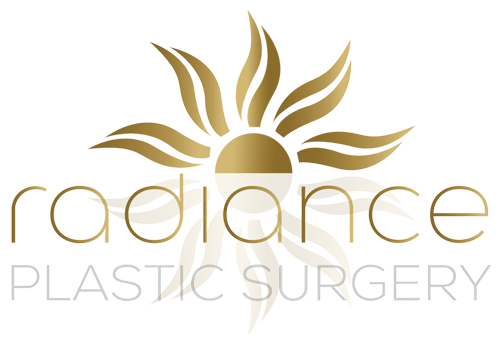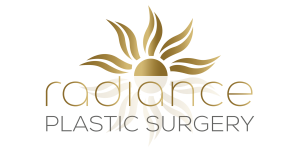A breast lift, also known as a mastopexy, is a surgical procedure designed to improve the shape and position of sagging breasts. This procedure has become increasingly popular, as it helps restore a youthful appearance by removing excess skin and tightening the surrounding tissue to support the breasts. However, a common concern among potential patients is the longevity of the results after undergoing breast lift surgery.
The duration of breast lift results depends on several factors, including the individual’s age, health, skin elasticity and the surgical technique used. It’s important to note that while a mastopexy can effectively provide a more lifted and youthful breast contour, it does not stop the natural aging process. Over time, factors such as aging, gravity, and fluctuations in weight may contribute to the breasts losing their shape and firmness.
Breast lift results can last several years. Maintaining a stable weight and practicing a healthy lifestyle can contribute to the longevity of the results. Discussing the expected outcome and potential risks with a qualified plastic surgeon before committing to the procedure is always advisable. This way, one can better understand how long the breast lift results might last and set realistic expectations.
Understanding the Breast Lift Procedure
Anatomy Involved in Breast Lift
A breast lift, or mastopexy, is a surgical procedure performed by a certified plastic surgeon to lift and reshape the breasts. It involves making incisions around the areola, the darker skin surrounding the nipple, and possibly along the breast crease to reposition the nipple and remove excess skin and tissue. This procedure often requires anesthesia and takes place in a surgical center.
The anatomy involved in a breast lift includes the nipple, areola, breast tissue, and underlying chest muscles. By carefully modifying the breast tissue, the surgeon can elevate the nipple-areola complex and reshape the breast mound for an improved aesthetic appearance.
During the healing process, a surgical bra or support garment is often recommended to minimize swelling, maintain the desired breast shape and provide comfort. Sutures will gradually dissolve, and incisions will typically fade over time.
Combining Breast Lift with Augmentation or Reduction
In some cases, a patient may choose to combine a breast lift with either breast augmentation or reduction to achieve the desired breast size and shape. Breast augmentation involves the use of implants or fat transfer to enhance the volume and projection of the breasts. In contrast, breast reduction is a surgical procedure aimed at removing excess breast tissue, fat, and skin to create a more proportionate and comfortable breast size.
When combined with a breast lift, augmentation can be performed using implants for a more significant enhancement (the “lift and augmentation at a single time” or LAST technique) or with fat transfer if a more subtle augmentation is desired. Liposuction may be performed in conjunction with breast reduction to further contour the breast and surrounding areas.
While some techniques, like the Vampire Breast Lift, are promoted as minimally invasive alternatives to traditional breast lift surgery, it is essential to consult with a qualified plastic surgeon or similar professional to determine the most suitable treatment plan for your needs. Combining a breast lift with augmentation or reduction creates an overall balanced appearance, with the reshaped breasts fitting harmoniously with the patient’s body.
Determinants of Breast Lift Longevity
Several factors can influence the longevity of a breast lift. This section examines individual and lifestyle considerations that may affect the procedure’s outcome.
Individual Factors
- Age: As a person ages, their skin loses elasticity, which can result in sagging and drooping breasts.
- Genetics: Some individuals may have a genetic predisposition to sagging breasts or excess skin, which can impact the results of a breast lift.
- Skin elasticity: The degree of skin elasticity can determine how well the breasts maintain their shape and lift after the procedure. Excessive sun exposure may result in a decrease in skin elasticity.
- Pregnancy and breastfeeding: These factors can cause breast size and shape changes, leading to sagging or elongated breasts. Maintaining a stable weight during pregnancy and breastfeeding might help in preserving the lift.
- Breast tissue: The composition of breast tissue can influence the outcome of the lift. Patients with more glandular tissue may experience better lift results compared to those with more fat tissue.
- Weight fluctuations: Significant weight changes can affect the shape and size of the breasts, possibly resulting in loose skin and the need for additional breast lifts.
Lifestyle Considerations
- Smoking: Smoking can negatively impact skin elasticity and the overall healing process, potentially affecting the longevity of a breast lift.
- Gravity: Gravity plays a role in the natural sagging of breasts over time. Wearing proper support, such as a well-fitted bra, can help counteract the effects of gravity.
- Weight management: Maintaining a stable weight after the breast lift procedure can contribute to longer-lasting results. Significant weight changes might lead to the need for additional lifts or other procedures.
- Sun exposure: Limiting sun exposure and using sunscreen can help preserve skin elasticity and minimize the effects of sun damage.
Though the longevity of a breast lift varies for each individual, attentiveness to these various factors can help patients achieve long-lasting, satisfying results.
Recovery and Maintenance Post-Breast Lift
Immediate Aftercare
After a breast lift surgery, patients should expect to experience some discomfort, swelling, and bruising. Some may be prescribed medications to help manage pain and prevent infection. A special bra or compression garment should be worn as the surgeon advises to aid in healing and minimize swelling.
Rest is essential during the initial stages of recovery, avoiding lifting heavy objects and strenuous activities.
Following the surgeon’s guidelines is essential, such as caring for the incisions and drains if present. During the downtime, it’s advised to avoid smoking and limit alcohol consumption, as these may hinder the healing process. Numbness around the nipples and incisions may occur but usually subsides over time.
Long-Term Care and Follow Ups
As the healing progresses, scars will begin to fade but will never disappear completely. Surgeons may recommend creams or treatments to help improve the appearance of scarring. Regular follow-up appointments should be made to monitor the recovery progress and address potential complications.
Breast lift recovery timeline varies between individuals, depending on medical history, age, and general health. Most patients can resume daily activities within a few weeks but should continue to avoid strenuous activities and heavy lifting for several weeks or as advised by the surgeon. Long-term maintenance of breast lift results requires a commitment to a healthy lifestyle and following any recommendations provided by the surgeon. This might include wearing supportive bras, maintaining a stable weight, and undergoing routine mammograms, where indicated.
It’s important to note that aging, life events such as having children, and significant weight fluctuations can affect the longevity of breast lift results. In some cases, additional procedures or implants might be recommended to maintain the desired appearance. Regular communication with the cosmetic surgeon ensures a safe and successful long-term outcome.
Frequently Asked Questions
How long is the recovery process for a breast lift?
The recovery process for a breast lift varies from person to person. Still, generally, patients can expect to return to work and resume light activities within one to two weeks following the procedure. Following your surgeon’s post-operative instructions is essential to ensure a smooth and successful recovery. Swelling and bruising should subside within a few weeks while your breasts settle into their new shape over several months.
What is the healing time for nipples after a breast lift?
Healing time for nipples after a breast lift will depend on the particular surgical technique used by your surgeon as well as your own body’s ability to heal. In general, patients can expect their nipples to recover within four to six weeks after surgery. During this time, you should avoid any activities that may cause strain or irritation to the nipples and follow your surgeon’s recommendations for post-operative care.
What are the main differences between a breast lift and breast augmentation?
A breast lift, or mastopexy, is a surgical procedure that raises and reshapes sagging breasts by removing excess skin and tightening the surrounding tissue. The goal is to achieve a more youthful, lifted appearance. On the other hand, breast augmentation is a procedure that involves placing breast implants under the breast tissue or chest muscles to increase breast volume and size. While both procedures can improve the overall appearance of the breasts, they address different concerns. A breast lift is primarily focused on correcting sagging and improving breast shape, while breast augmentation aims to increase breast size and enhance fullness.
Do breasts tend to sag again after undergoing a breast lift?
While a breast lift can significantly improve the appearance of sagging breasts, it cannot stop the natural aging process or the effects of gravity on breast tissue. Over time, your breasts may begin to sag again. Factors such as weight fluctuations, pregnancy, and hormonal changes can also impact the long-term results of a breast lift. Maintaining a healthy lifestyle and stable weight can help prolong the surgery’s effects. In some cases, patients may choose to undergo a second breast lift to address any recurrence of sagging.

